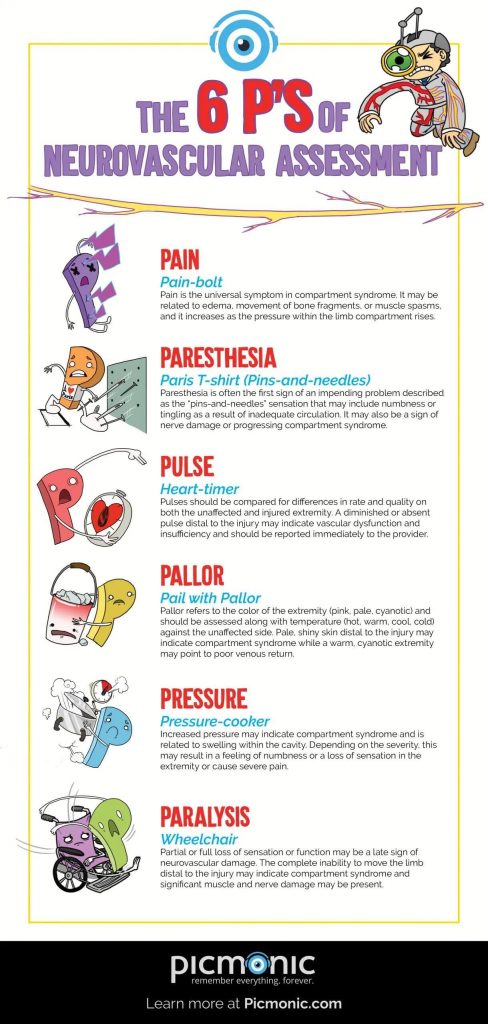A neurovascular assessment, which is also called a “circ check” is performed to determine if there is adequate circulation and sensation to an extremity.

Some topics you will learn in this infographic:
Pain:
Pain is the universal symptom in compartment syndrome. It may be related to edema, movement of bone fragments, or muscle spasms, and it increases as the pressure within the limb compartment rises.
Pulse:
Pulses should be compared for differences in rate and quality on both the unaffected and injured extremity. A diminished or absent pulse distal to the injury may indicate vascular dysfunction and insufficiency and should be reported immediately to the provider.
Pallor:
Pallor refers to the color of the extremity (pink, pale, cyanotic) and should be assessed along with temperature (hot, warm, cool, cold) against the unaffected side. Pale, shiny skin distal to the injury may indicate compartment syndrome while a warm, cyanotic extremity may point to poor venous return. Normal capillary refill should be within 3 seconds and anything longer should be investigated for causation.
Pressure:
Increased pressure may indicate compartment syndrome and is related to swelling within the cavity. Depending on the severity, this may result in a feeling of numbness or a loss of sensation in the extremity or cause severe pain.
To learn more, get started with a free Picmonic account.













